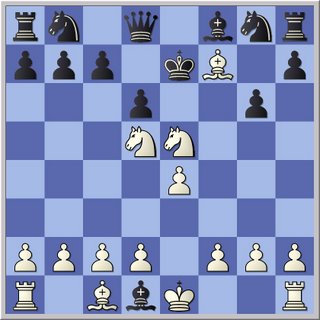 Legall's Mate
Legall's MatePay close attention to this one, kids! This is a very famous pattern and it can win you some games! The trap came from a game played by Sire de Legall against St. Brie in 1750.
1.e4 e5 2.Nf3
The knight attacks the pawn on e5.
2...d6
Black protects the e5-pawn, but blocks in his bishop on f8
3.Bc4
White brings out his bishop and attacks the f7-square. Remember, at the beginning of the game, this is the weakest point on the board!
3...Bg4
The bishop pins the knight.
4.Nc3
White brings out another piece.
4...g6
This is too slow. Black should bring out PIECES and get ready to castle.
5.Nxe5
A sudden knight jump! But wait, doesn't White just hang the queen?
5...Bxd1
A queen is a queen...
6.Bxf7+ Ke7
The only legal move. Check it out for yourself!
7.Nd5# (see diagram at the top)
Checkmate! Black has no pieces that could help him, and the three white minor pieces end the game in the opening.
What did we learn from this game?
1. It is important to bring out your minor pieces (bishops and knights) early in the game.
2. Don't take material (even a queen!) if it allows your king to be attacked by many enemy pieces.
3. Respect your opponent! Maybe they see something that you do not see, so don't just think they made a blunder.
To learn more about the Legall mate, check out Wikipedia.
What did we learn from this game?
1. It is important to bring out your minor pieces (bishops and knights) early in the game.
2. Don't take material (even a queen!) if it allows your king to be attacked by many enemy pieces.
3. Respect your opponent! Maybe they see something that you do not see, so don't just think they made a blunder.
To learn more about the Legall mate, check out Wikipedia.

No comments:
Post a Comment